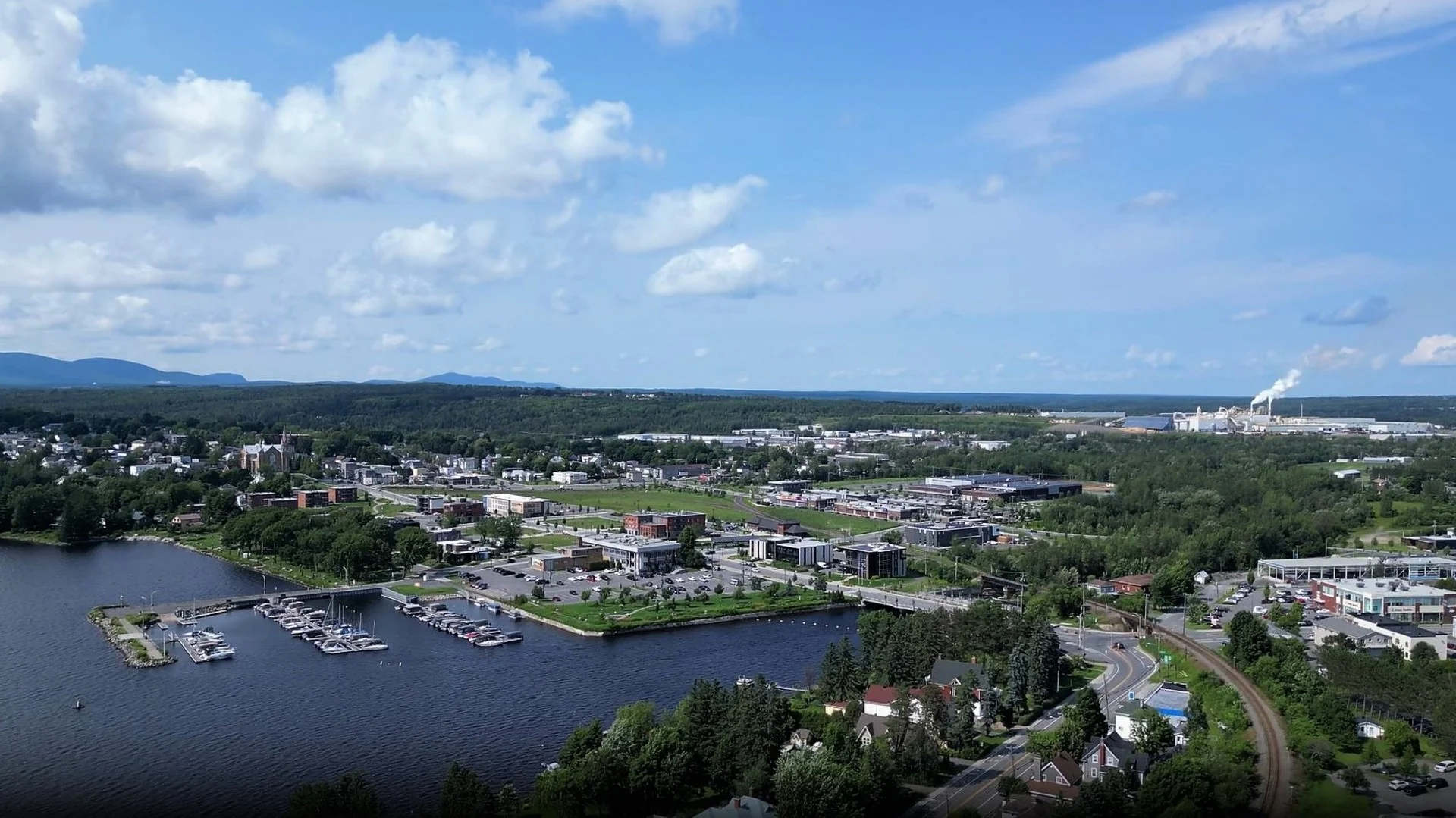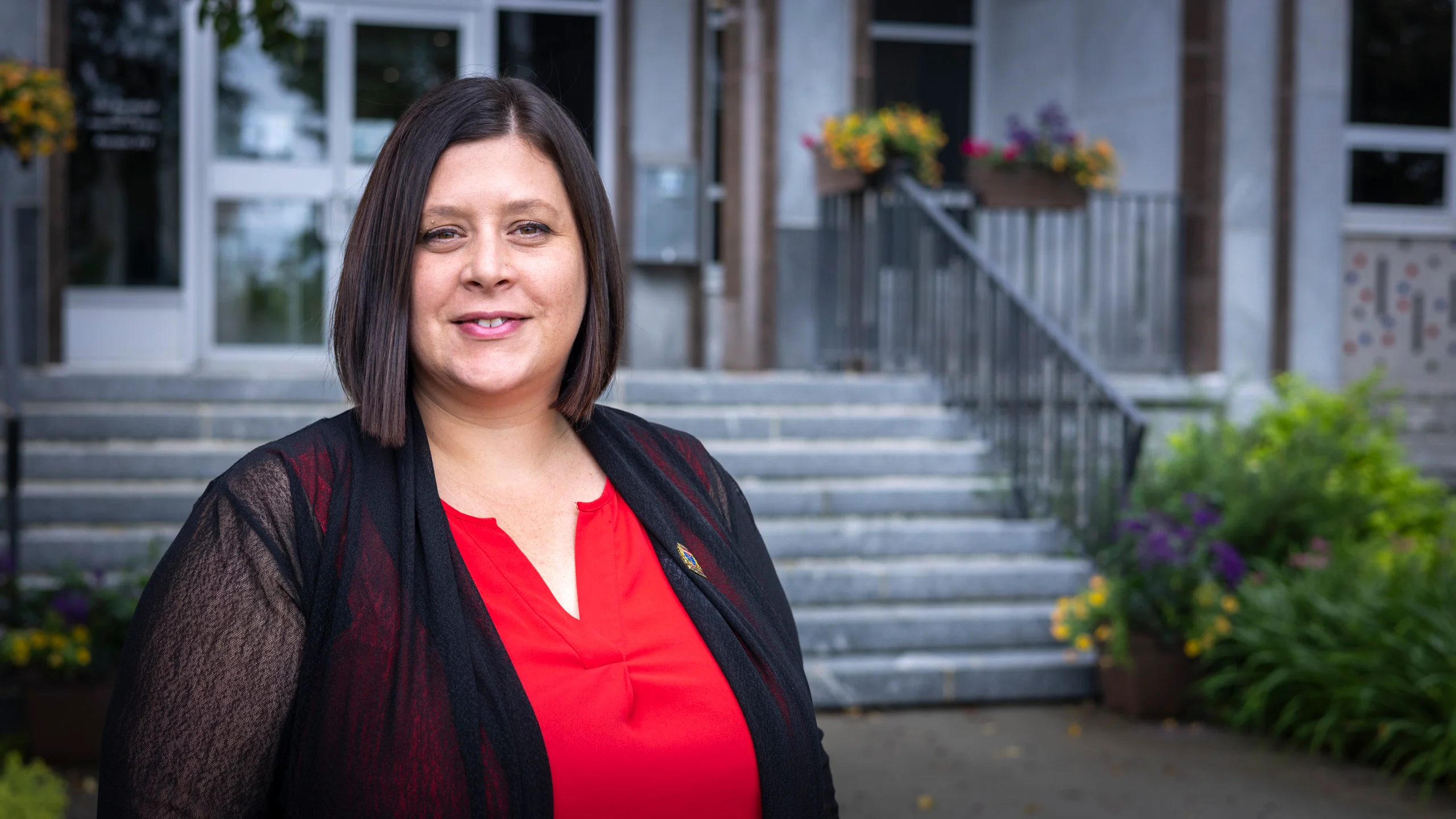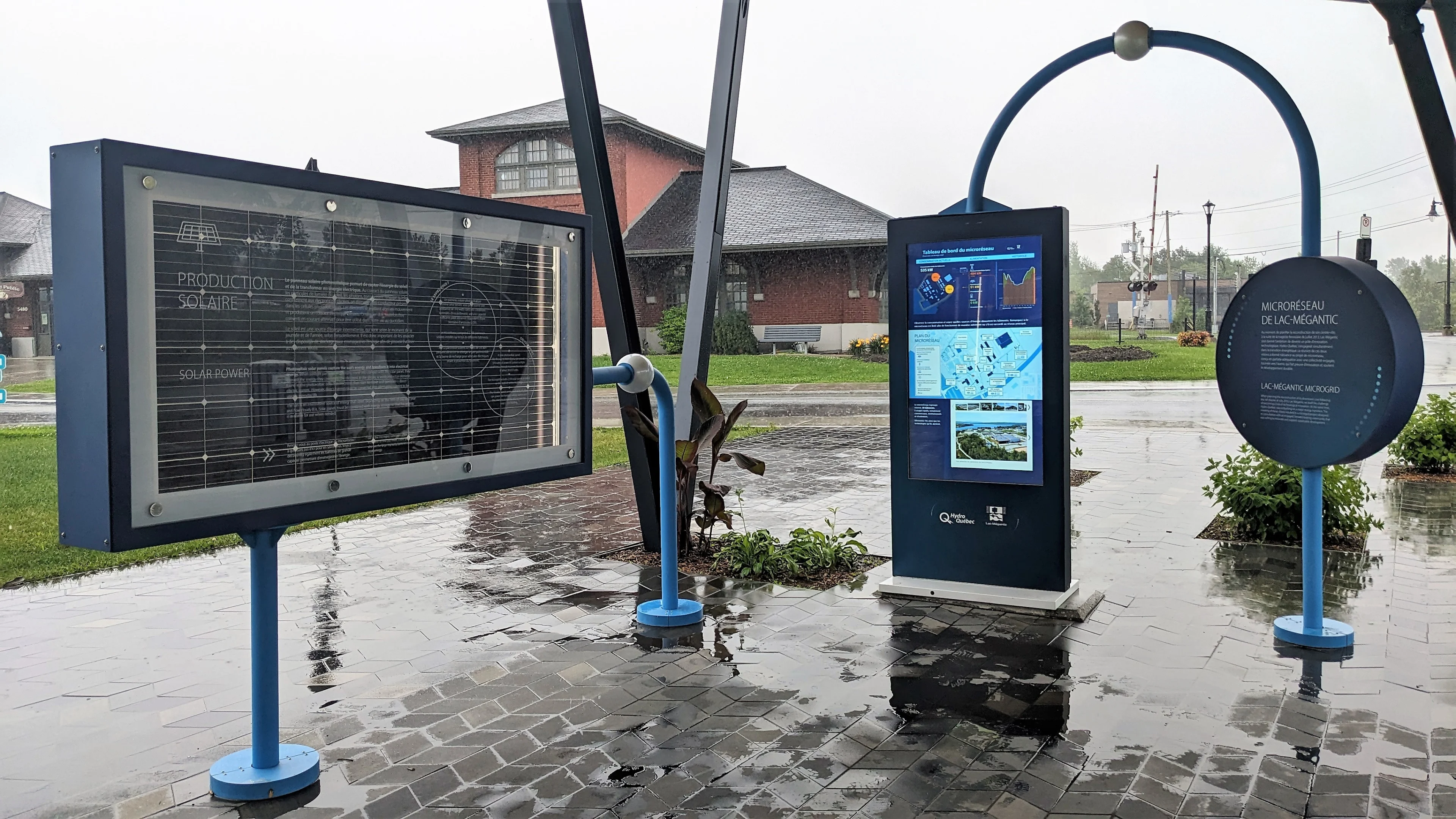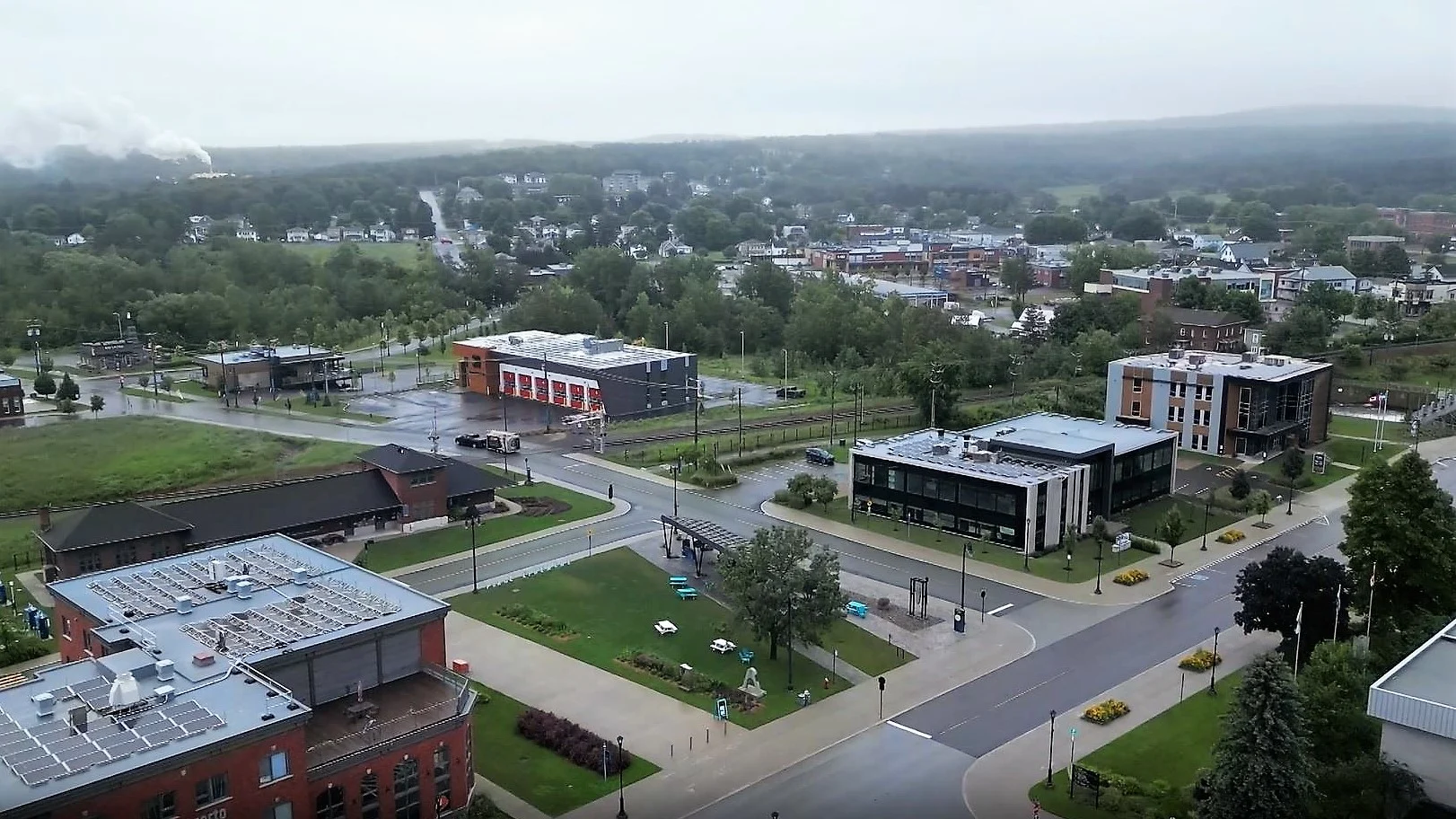
Lac-Mégantic: from a train tragedy to a green transition
Ten years after it was devastated by the worst train wreck in Canadian history, Lac-Mégantic is re-emerging from the ashes to become a model for sustainable small town living.
On the night of July 6, 2013, a train carrying over 70 tanks of crude oil derailed in the little town of Lac-Mégantic, Que. The wreck and ensuing fires raged on for a week, claiming the lives of 47 people and decimating most of the town center.
The environmental impact on the soil, river, lake and watershed was unimaginable and will take years to repair.
Ten years later, from a certain point of view, not much has changed. The tragedy left psychic scars in the townspeople, while the landscape itself is dotted with memorials. Yet the train still rolls through downtown every day carrying more and more tankers full of hazardous materials. According to critics, regulations and practices surrounding the transportation of dangerous cargo, including fossil fuels and petrochemicals, have not improved, as evidenced by the catastrophe in East Palestine Ohio earlier this year.
But from another angle, the region has experienced a profound transformation. From the collective trauma arose a spirit of community engagement and sustainability that guided every step of the reconstruction. MétéoMédia went to visit shortly after the 10-year commemoration of the tragedy, not to dwell on the event, but to celebrate what has been accomplished since.
Power from the people

Julie Morin is the current mayor of Lac-Mégantic, elected in 2017 when she was only 34 years old.
Morin’s vision for the town is innovative, rooted in values like sustainability, slow living, and eco-responsibility. But she insists it all comes from the residents, who were consulted quickly after the accident and invited to collaborate fully in the reconstruction project.
“The citizens clearly said they wanted a green downtown. The idea to transition to renewable energy to reduce our dependence on oil, it all comes from them,” she told MétéoMédia.
In 2020, the town established a municipal commission, enshrined in the town charter and dedicated to innovation and the energy transition. It is composed of two elected representatives and nine regular citizens; together they issue recommendations and connect the people of Lac-Mégantic with programs and resources to support them in the transition. They are involved in everything from construction to transportation. One popular initiative is a subsidy to help people purchase electric vehicles or equipment — it was so successful that the town had to double the budget for that initiative after six months to meet demand.
But Mégantic is a small town with big ambitions. Stéphane Vachon, director of Economic Development for the town, says their objective is not to rebuild as before, but better.
“It was very clear that the new development of the city would have to be focused on renewable energy, as far as possible from fossil fuel. So we embraced the opportunity to develop an energy transition. So it's an opportunity for economic diversification,” Vachon told MétéoMédia.
For example, the region is heavily invested in wind energy, with a wind farm in operation and a second in construction. The wind farms are partly owned by the 16 surrounding towns and villages (including Mégantic), which provides them with substantial injections into their municipal budgets. Mégantic reinvests a significant portion of these funds to green initiatives, like the popular electrification subsidy.
But for Vachon, the vision is for Lac-Mégantic to become an incubator for research and new technologies in renewable energy, but also how to get cooperation and active engagement from the population.
“Our main purpose is to be useful to society,” he said. “Because climate change and energy transition and all that, it’s a global challenge. So here, at our very small scale of a 6,000-people city, we think we can have a bigger impact than just our little population.”
Local energy
The gem of this new strategy is the microgrid, a joint venture with Hydro-Québec. Over 2,200 solar panels were installed on rooftops all over the new downtown core, forming an autonomous grid that generates around 800 kW of power, with battery storage for around 700 kWh. It normally feeds power into the main grid, but can operate autonomously to power the town.

A kiosk downtown shows real-time stats on the microgrid’s energy production and usage to raise awareness about the project and energy efficiency in general. (MeteoMedia)
The microgrid may be on a smaller scale, but it provides a wealth of precious data for Hydro-Quebec, which is using it as a testing ground to develop the concept and bring it to remote regions that are still reliant on fossil fuels. They are also testing new technologies, like bifacial solar panels that capture the sun’s rays on both sides, generating 10 to 15 per cent more electricity.
Rebuilding downtown
The microgrid is connected to about 30 buildings, including the town hall, sports center, and new firehouse. Not only are the new buildings equipped with solar panels, they are also for the most part LEED certified and energy efficient.
The new downtown leaves a lot of space for nature and for the memories of the tragedy, with green parks and sober memorials offering an open view of the lake and mountain that give the town its name. But it’s also a lively human-scale town center, with commercial and mixed-use residential buildings offering affordable housing, community resources and activities, public spaces, and cultural landmarks all grouped within easy walking distance. A perfect model of a 15-minute city.

Downtown Megantic, showing the Concerto (mixed-use residential with solar panels), historic train station (now a museum), microgrid kiosk, and new firehouse. (MeteoMedia)
Slow living
Lac-Mégantic prides itself for being the first town in Quebec (fourth in Canada) to receive the Cittaslow certification. This international movement, born in Italy and inspired by the Slow Food movement, now includes 236 towns of under 50,000 residents in 30 countries, connected by the pursuit of a better quality of life.
There are 72 criteria a town must meet to get the certification, ranging from the quality of the air and water to things like infrastructures, urban planning, protection of local artisans and agriculture, social inclusion and cohesion, responsible tourism, and more.
“Sustainable development was in Lac-Mégantic’s DNA, I think that’s clear. The tragedy brought us back to the essentials,” Morin said of the ongoing green rebuild.
“We want to be a leader for other small towns in the energy transition, to show that we can do our part,” she said, adding her hope is residents stay engaged.
"That we can show that Lac-Mégantic is more than its tragedy, that our people got back up from this devastating event, which had a major environmental impact, in a smart and sensible way.”












